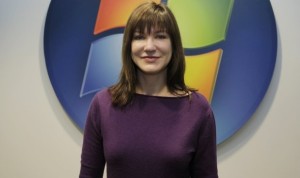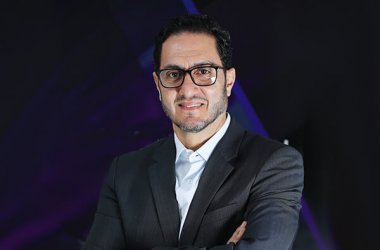 On Monday night, Julie Larson-Green was given one of the most important roles within Microsoft.
On Monday night, Julie Larson-Green was given one of the most important roles within Microsoft.
You’d never know it from the initial reports, which dubbed it a “demotion.” And it is a demotion, at least from a corporate perspective. Larson-Green formerly headed up the Devices and Services Group as an executive vice president, and has been one of Microsoft’s top leaders. Now she will serve as the Chief Experience Officer in the Applications and Services Group, leading the My Life and Work team.
Essentially, Larson-Green went from overseeing the look and feel of Windows and Office to ensuring that the look and feel is consistent across all of the platforms where Microsoft’s services – including Windows – plays.
And for those of you who detest the look and feel of Windows 8 – and feel that the “Metro” environment should be locked in an attic somewhere on the Redmond campus – Larson-Green’s reassignment is probably bad news. But more sober thinking says that the move represents an opportunity for Larson-Green herself, and for Microsoft as a whole.
Testing the ‘flattened’ corporate structure
Little more than a year ago, Microsoft’s then-chief executive Steve Ballmer outlined a corporate reorganisation that gave individuals and technologies more autonomy to roam across the traditional “silos” of the corporate structure. “We will see our product line holistically, not as a set of islands,” Ballmer wrote. “We will allocate resources and build devices and services that provide compelling, integrated experiences across the many screens in our lives.”
Granted, Ballmer is gone, and Satya Nadella now runs the company. But if Microsoft is serious about its plan, asking a former senior vice president to pioneer the new experiment should give Larson-Green’s new role some political cover. And, as a senior executive, Larson-Green is used to coordinating various teams, including engineering, UI groups, and more.
Consistency, consistency, consistency
And as Microsoft evolves its brand across various platforms, Larson-Green’s talent for coordination will be put to the test.
Take the Nokia X, for example. Nokia’s launch of the Nokia X represents an opportunity for Microsoft to expand Windows Phone and the Microsoft brand into the emerging markets where it has already established a foothold. And Nokia, for now, remains a separate company with its own corporate agenda and branding strategy. Eventually, though, Nokia will come on board.
And Microsoft is also going to have to think through some of the small but nagging obstacles that gum up the system. One example: Earlier today, we spoke with Lara Kingwell, a product manager with Skype, and asked her what Microsoft’s plans were for federating, or connecting, a Microsoft/Skype ID with a Microsoft Xbox gamertag. The goal, I was told, was to make logins and identity across Microsoft’s platforms a “simple experience.” And it could be simple – just connect the two together. Or don’t. That decision needs to be made, and now Larson-Green can step in, take charge, and make it happen.
But there’s still a potential roadblock in place: Stephen Elop’s new role as Devices and Services chief reportedly puts him in charge of the Xbox fiefdom. So who makes that final decision, where both Xbox and Skype is concerned? I’d argue that Nadella should publicly back Larson-Green on this, and establish her primacy where user experience is concerned.
Move forward, not back, on platforms
Reports that Ford was set to drop Microsoft’s technology for Blackberry’s QNX in the future development of its Sync technology should have set alarm bells ringing in Redmond. If there’s any move that Microsoft needs to make in emerging platforms like cars, it’s forward, not back.
As reports have pointed out, both Apple and Google are engaging in a land rush with automakers, staking their claims. In terms of mindshare, the Sync system was either dominant or at least competitive with other solutions. So the last thing that Microsoft needs is to end up with a Windows Phone-like market share in automobiles, especially when it had established a solid foothold.
Essentially, Larson-Green’s role, in her own words, involves “developing the Digital Life & Digital Work Experience Substrate that powers modern digital experiences regardless of device.” That’s an awful mouthful of corporatespeak to choke down, but she’s essentially responsible for the technical elements of making it all work.
Moving freely across business units and silos is something that defies over 30 years of corporate inertia within Microsoft. But Microsoft has no public ombudsman, a customer advocate who can assimilate criticism of the company’s products and services – even services Larson-Green helped design – and see that changes are made. Some might say that’s Nadella’s job. But it doesn’t have to be.
Larson-Green seems to imply that she understands the journey, citing a Chinese proverb in her note to employees. “To get through the hardest journey we need take only one step at a time, but we must keep on stepping.”
That could represent anything: the demise of the traditional PC, Microsoft’s struggles in the phone market, and Larson-Green’s new path. But it’s also a journey to a future Microsoft that Larson-Green could help lead.





